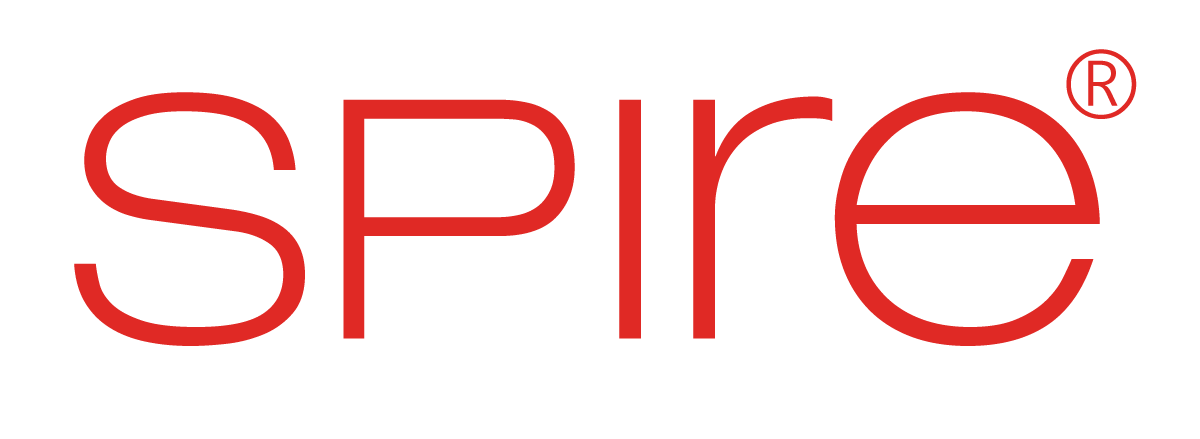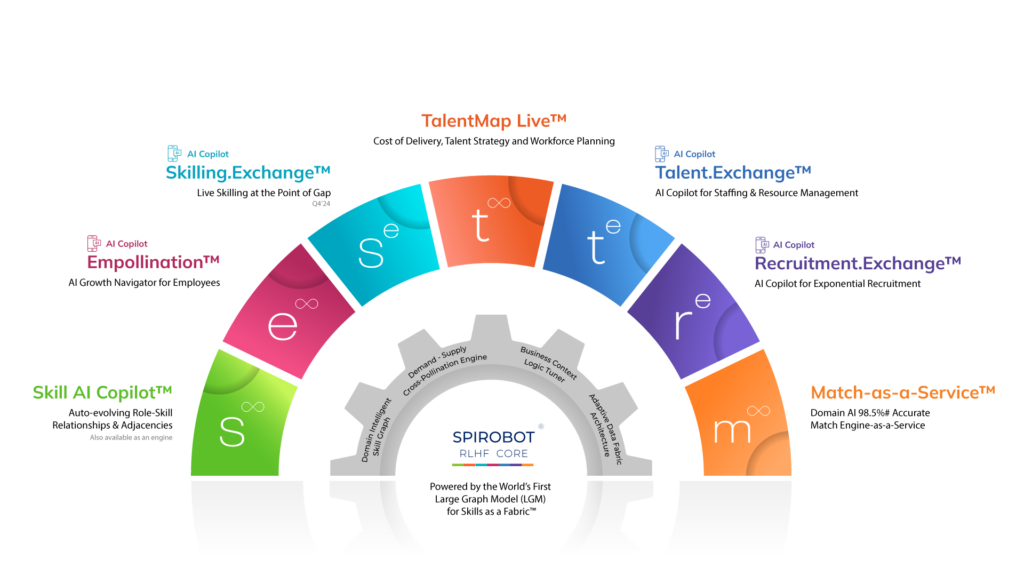In today’s rapidly evolving work landscape, the traditional career trajectory – climbing the corporate ladder through promotions – is no longer the only path to success. Companies recognize the value of a multi-skilled workforce, and employees are increasingly seeking growth opportunities beyond just a higher title. This significant shift demands a new approach to career pathing that fosters diverse career paths and empowers employees to chart their course within the organization.
This blog explores strategies for nurturing a multi-skilled workforce and avenues for employee growth beyond promotion. We’ll also introduce the concept of an AI Copilot for Talent, a powerful tool that can help organizations and employees navigate this new career landscape.
Why Move Beyond the Promotion Model?
The following limitations of the promotion model are becoming apparent.
- Limited Options: The promotion model often restricts employees to a single career trajectory within their department. This can be stifling for individuals with diverse skills who yearn to explore different areas of the organization.
- Focus on Hierarchy: Emphasizing promotions can create a competitive rather than a collaborative environment. Employees may hesitate to share knowledge or collaborate for fear of jeopardizing their advancement.
- Retention Challenges: When promotions become scarce, especially in flat organizational structures, it can lead to employee frustration and a higher risk of them seeking opportunities elsewhere.
The Benefits of Diverse Career Pathing
Mapping diverse career trajectories presents a win-win situation for both employees and organizations. Let’s explore some key benefits listed below:
- Empowered and Engaged Workforce: When employees have a clear view of their growth options beyond promotions, it fosters a sense of agency and career ownership. They are more likely to be engaged, motivated, and take initiative.
- Increased Innovation: By encouraging cross-functional collaboration and movement between departments, career pathing unlocks a wider pool of skills and perspectives, leading to a more innovative and adaptable workforce.
- Improved Retention: Providing employees with opportunities to learn, grow, and utilize their diverse skill sets fosters a sense of value and belonging. This translates to higher employee retention rates, saving companies the additional cost of recruitment and onboarding.
- Attracting Top Talent: A culture prioritizing diverse career development sends a strong message to potential recruits. It demonstrates that the organization values not just their current skills but also their potential for future growth.
Mapping Employee Growth: Beyond the Promotion
Regarding career development, many organizations equate “growth” with a promotion or vertical move. However, there are several other paths to explore:
- Lateral Movement: This involves moving to a different role within the organization that utilizes a similar skillset but offers new challenges and learning opportunities. This can be a great way to broaden employee’s perspectives within the company and develop new skills that complement existing ones.
- Reskilling for Native Role: The skills required for your current role can evolve. Reskilling allows employees to stay relevant and competitive within their field. This could involve taking courses, attending workshops, or pursuing certifications pertinent to your work.
- Project-Based Learning: Volunteering for or seeking out opportunities to lead projects outside of core duties can expose employees to new business areas and foster the development of valuable skills.
How to Achieve a Diverse Career Pathing Landscape for Employees
So, how can organizations implement a system of career pathing? Here are some practical steps:
- Identify Skills and Interests: Conduct an internal skills audit to identify your workforce’s diverse skillsets and interests. Surveys and one-on-one meetings can help gauge employee aspirations and career goals.
- Create Development Frameworks: Develop career development frameworks or use career pathing software that outlines all the paths employees can take based on their skills and interests. These frameworks can include vertical or lateral moves, project-based work in different departments, mentorship programs, and opportunities for skill acquisition through training and development programs.
- Skills Development and Learning: Offer upskilling and reskilling opportunities to help employees acquire new skills for various career paths. This could include internal workshops, external courses, and online learning platforms.
- Promote Transparency and Visibility: Make information on diverse career paths readily accessible to employees. This can be through an internal career development portal, workshops, and regular communication channels. Encourage open communication between managers and employees to discuss career goals and explore options.
- Mentorship and Sponsorship: Invest in mentorship and sponsorship programs. Mentors can guide and support employees navigating diverse career paths, and sponsors, typically senior leaders, can actively advocate for employees’ advancement opportunities.
- Recognize and Reward: Recognize and reward employees who successfully adapt to diverse career pathing. This will motivate them and encourage others to explore non-traditional career growth opportunities.
Introducing an AI Copilot for Talent
Managing and facilitating diverse career paths in a large organization can be complex. Here’s where the concept of an AI Copilot for Talent comes in. Imagine a powerful tool that can:
- Automatically generate skill profiles for your workforce based on existing employee skill profiles, saving time and resources. (Just like Spire.AI!)
- Recommend personalized career paths that align with employee aspirations and the organizational vision.
- Provide access to a live internal talent marketplace to foster internal mobility and growth opportunities.
By leveraging AI, organizations can create a more streamlined and data-driven approach to career development. This empowers employees to take charge of their growth and navigate the ever-evolving skill landscape.
A Glimpse into Spire.AI’s Talent Solutions
Spire.AI Copilot for Talent is a full-stack SaaS solution designed to empower organizations and employees toward a Skills-Based Organization (SBO). It offers a suite of features that address the critical challenges of talent management in today’s world, including:
Automatic AI-generated Employee Skill Profiles: Spire.AI gathers and analyzes data from various sources to create comprehensive skill profiles for more than 83% of your workforce with minimal input, like job titles. This eliminates manual data entry and gives you a panoramic view of your talent pool.
Career Path Simulation and Reskilling Recommendations: Spire.AI Copilot for Talent goes beyond employee skill profiles. It automatically generates and recommends personalized career pathing for lateral and vertical moves based on individual aspirations, current job opportunities, and the company’s future strategic direction.
Based on these personalized career paths, Spire.AI also recommends suitable upskilling and reskilling pathways to get started with and flourish on these career paths.
Imagine an employee interested in exploring a career in marketing but still needs to learn the necessary skills. Spire.AI can analyze their existing skill set and suggest relevant courses, internal job postings for lateral movement, or even mentorship opportunities to bridge the skill gap.
Live Internal Talent Marketplace: Spire.AI Copilot for Talent facilitates a dynamic internal talent marketplace that connects employees with relevant opportunities within the organization. This platform helps:
- Increase Internal Mobility: Spire.AI’s AI-powered matching algorithm helps employees discover and apply for all suitable roles based on their skill sets and aspirations. This can lead to a significant increase in internal mobility, as seen in real-world implementations where mobility rates rose from 21% to 56%.
- Promote Democratized Growth: Spire.AI provides a transparent and unbiased platform so everyone can pursue internal opportunities regardless of seniority or department.
The Power of Partnership: Spire.AI and Your Workforce
By adopting an AI Copilot for Talent like Spire.AI, organizations can unlock the full potential of their workforce. Spire.AI empowers employees to:
- Chart their course: With personalized career roadmaps and skill gap analysis, employees can take control of their professional development.
- Stay future-proof: Spire.AI equips employees with the skills needed to thrive in a dynamic job market by recommending relevant upskilling and reskilling opportunities.
- Increase engagement and satisfaction: Feeling valued and supported in their growth fosters a more engaged and satisfied workforce.
Final Thoughts
The traditional career ladder is broken. In today’s dynamic world, employees crave growth, not just promotions. The future of work belongs to organizations that foster a culture of continuous learning and development. Companies can unlock innovation, agility, and a competitive edge by investing in a multi-skilled workforce and empowering employees to navigate diverse career paths.
Imagine a future where rigid hierarchies don’t limit employees but can explore and develop their diverse skill sets. This future is within reach with the help of advanced AI-powered tools like Spire.AI Copilot for Talent. By leveraging AI, you can automate tedious tasks, personalize career development, and connect employees with exciting internal opportunities. Invest in your workforce’s growth; together, you’ll build a future of innovation, agility, and success.
In conclusion, fostering a culture of personalized career pathing is no longer a perk but a strategic necessity for skills-based organizations. It empowers employees, fuels innovation, and strengthens your organization’s ability to compete in a rapidly changing world. By implementing the above steps, you can create a system that values past accomplishments and future potential.
Spire.AI stands ready to be your partner in this exciting journey. With our comprehensive talent management solutions, you can empower your employees and unlock the full potential of your organization’s human capital. Let’s build a future of work where growth and development are encouraged and actively championed.






